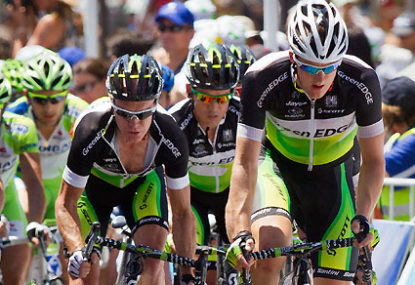'I've just won a stage of the Tour de France, mate!': Hindley grabs yellow jersey as Aussie blows Tour apart
Australia's Jai Hindley has said he is "lost for words" after a shock stage victory at the Tour de France earned him the leader's…

For scores of young sports people – footy and basketball players, swimmers and the like – a dream physique involves the typical hallmarks of athletic ability: big biceps, six packs, broad shoulders, and large powerful legs.
For the aspiring endurance road cyclist however, with dreams of racing up the mountains in the Tour de France, this desired physique differs substantially.
Instead of the well-built, large and muscular body shapes seen in other sporting codes, many cyclists’ consider ribcage outlined torsos, twig like arms and sunken cheeks – epitomized by the likes of Tour de France winner Bradley Wiggins and Luxembourger Andy Schleck – as features that constitute an idyllic body type.
Bike racers want to emulate the multitude of slender, shredded, skinny and shaven legs that fill the professional peloton in Europe.
They want the unused weight situated on their arms and their chest to vanish. They yearn for bodies that are road mapped by veins. Big arms? Pfft. Pecks? Useless.
Why do cyclists chase after this ambition for leanness (as obtaining the said physique will obviously do nothing to assist one’s chances of getting a girlfriend)? The answer lies with one simple and important concept: the power-to-weight ratio.
The power-to-weight ratio is simple to understand and has an unmistakable benefit: the more power you have at the lightest weight possible means you will climb better.
It is therefore a cyclist’s desire to get rid of excess fat, to be lean and light, all while not losing too much power. A simple task, surely? Well, not quite.
At times, this pursuit of leanness gives rise to an unhealthy obsession with weight. Some riders forget and ignore the ‘power’ aspect in the power-to-weight ratio. The notion of being lean and powerful is frequently skewed in a cyclist’s mind; often the appearance of being lean or skinny takes far more precedence than actually riding well.
Soon eating can turn into a competition of how few calories one can consume, and of what food should be thought of as: fuel.
This ‘starvio diet’, as some cyclists term it, can send a rider spiralling down into an energy-less, power depleted, moody and sickness-prone mess. Instead of gaining a performance advantage the opposite occurs, leading to the mental crack and then binge eating.
Obviously this isn’t the case for every cyclist. For the most part, riders will eat right and train hard; they achieve leanness and don’t lose too much power. Some are also big and muscular (while still being lean).
Many riders realise they will never be hill climbers or Grand Tour winners – they understand that they are not Alberto Contador; instead they focus most of their attention towards power.
Nevertheless, this unhealthy get-lean-at-all-costs approach is a trap that is easily fallen in to.
I know of a few riders trying to drop a few kilograms that would – on returning home from a six and half hour ride – simply nibble on a small plate of vegetables (and nothing else).
I also know riders who would scale all aspects of their life by a measure of how ‘lean’ something was.
And I know others who will skip meals irrespective of how heavy their training load is at any given time.
Why? It’s the ‘lean’ thing to do.
With the Australian cycling summer of racing, featuring climbs such as Arthur’s Seat in the Jayco Sun Herald Tour and the infamous National Championship climb out at Buninyong, several riders will be trying desperately to avoid the calorie-dense Christmas festivities and New Year shenanigans.
For lots of riders in Australia, the National Championships is the time they try hardest to be lean. It is one of the few races in the year where professional and domestic riders can come head-to-head in a race that is both lengthy and hilly.
My advice for those chasing their lean goals? Have a bit of common sense. Avoid extremes. Train hard and enjoy riding your bike.
Unless you are planning on racing up Alpe d’Huez or Stelvio Pass, having that one extra kilogram, with the benefit of having a little extra power, will probably do you the world of good.